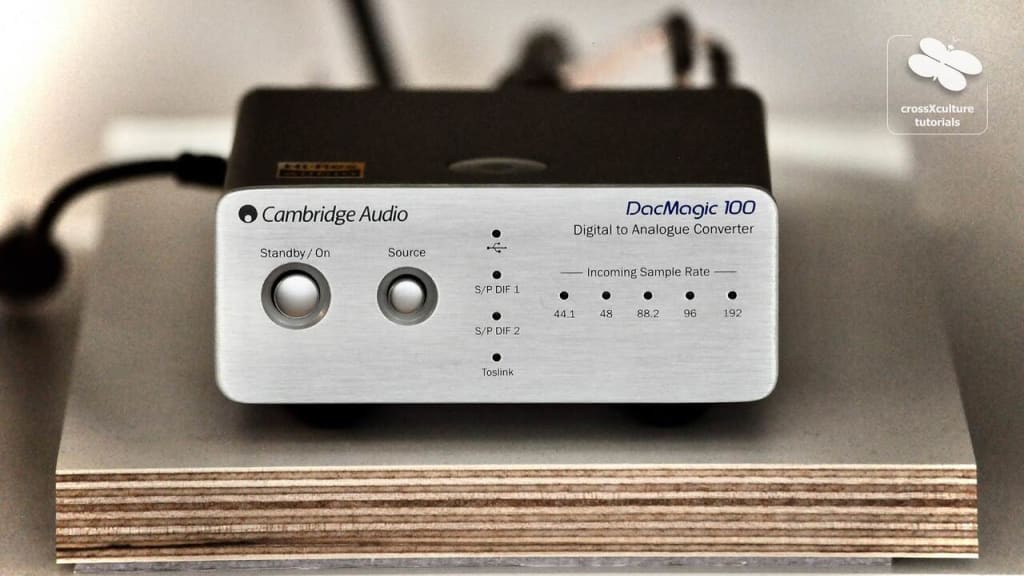14. DACs
Published: 09/05/2020
Author: Karsten Hein
Category: High Fidelity
There certainly is ‘magic’ in a DAC, not just in a Cambridge Audio “DacMagic 100”. A DAC is needed to convert digital signals coming from a CD player, a streamer, a laptop or a PC, and possibly many other sources, into an analog signal that can be processed by an analog pre-amplifier or similar device. As the digital signal is an approximation of an analog signal, there are some calculations involved. Finally, there is some foresight and sonic calibration necessary in the analog segment of the DAC to match the DAC’s output stage with the receiving device.
The magic comes into play, when we hook up our DAC to a high-quality CD player. Because in this setup both the bit depth and sampling rate of the medium are given facts. The question at hand being: Will the external DAC outperform the CD player’s internal DAC, and in which way? Granted, you probably have to be an audiophile nutter to enjoy this sort of challenge. But, boys will be boys, and that is arguably good as it is. Other people sit for hours to pull fish out of the water, only to throw them back in.
There are better DACs than the Cambridge DAC shown here. However, it is good value for money and did receive a favourable review from Ken Rockwell which should mean something. This being our first DAC, the small investment seemed high enough at the time. The DAC offers two coaxial, one Toslink, and one USB socket. The USB processing, especially, is said to be among the best in the market. Hi-res audio processing is possible, up to 192kHz. Normally, the adventure would end here, but you can probably already guess that it won't.


